Timely
Meetup focusing on quick and timely hangouts.

Type
Mobile App resulted from a course named Social Computing
Time
2018.9-2018.12 & 2019.2
Teammates
Mengdie Lin (UX Designer) / Shaun Cheng (Engineer) / Wenyang Mu (UX Designer) / Yuanze Zhang (Engineer)
My Role
UX Designer
Skills
Interaction design / Product Management / Collaboration with tech teams
Tools
Sketch / Principle
PROBLEM & GOAL
Initial Problem: Spare time is not always spent fulfilling
Among the hustle and bustle of our daily life, it is a luxury to have spare time, during which we can do anything or nothing
as we like. But sometimes, people don't feel fulfilled with the way they spend their spare time. They may have attended activities
not that interesting to them, or worse, they may have done nothing and felt their precious spare time has been totally wasted.
The initial goal of this project was to assist people spend their spare time more fulfilling.
To specify: Many people attend activities in spare time, why are the activities not fulfilling enough?
To narrow the scope done, we chose students in universities as the target user group, and we had this assumption
that many target users spend their spare time hanging out with others.
To prove the assumption, and locate specific user problems, we sent out surveys, which will also be mentioned in
Research, to students in University of Michigan
and we got 98 responses in total:
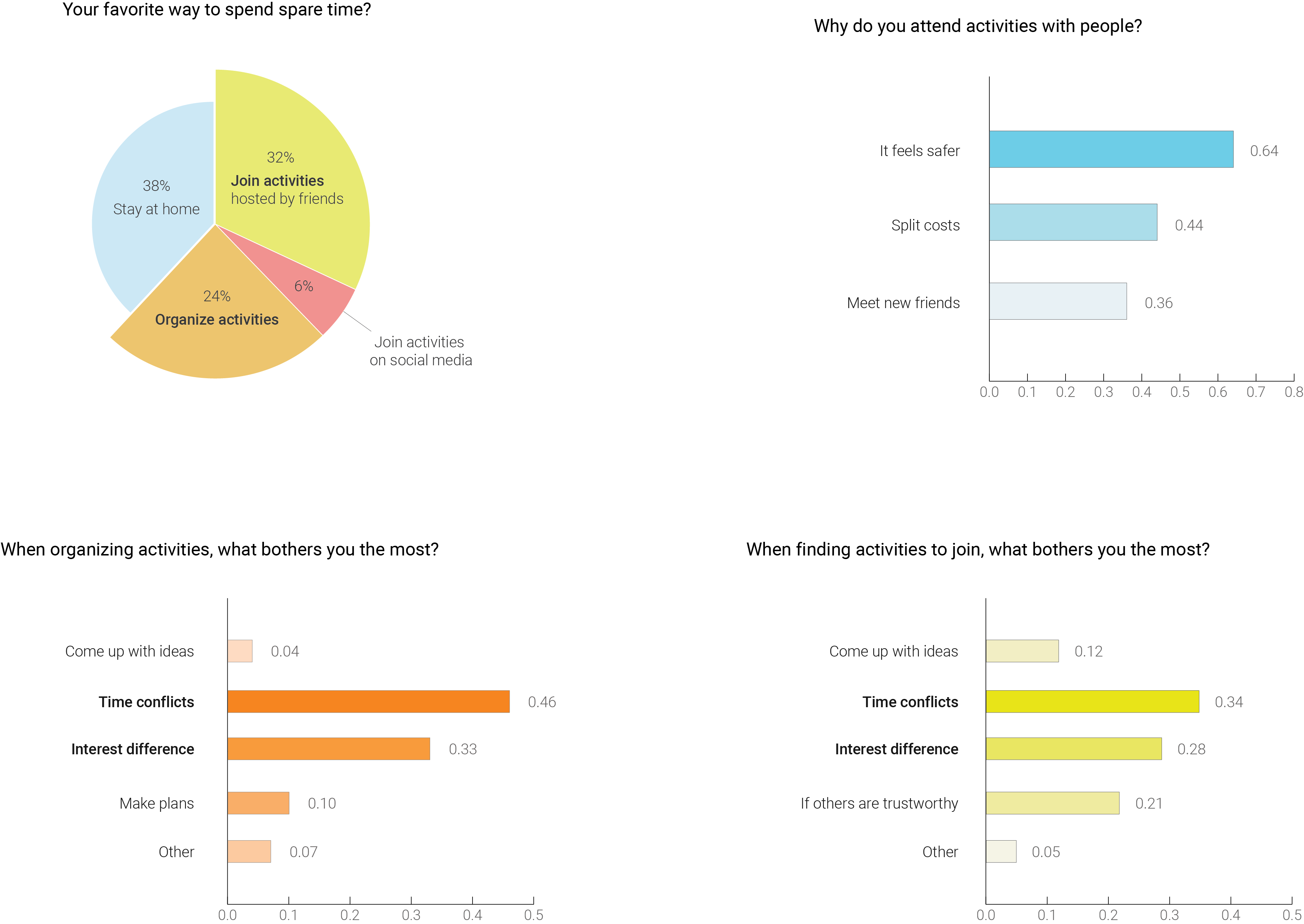
Modified Problem: It's hard to have fulfilling activities with time conflicts and interest differences
From the charts above, we found that many people would spend spare time in activities, but for both organizers or participants, the time conflicts and interest differences with potential companions are the major obstacles for their activity experience to be fulfilling.

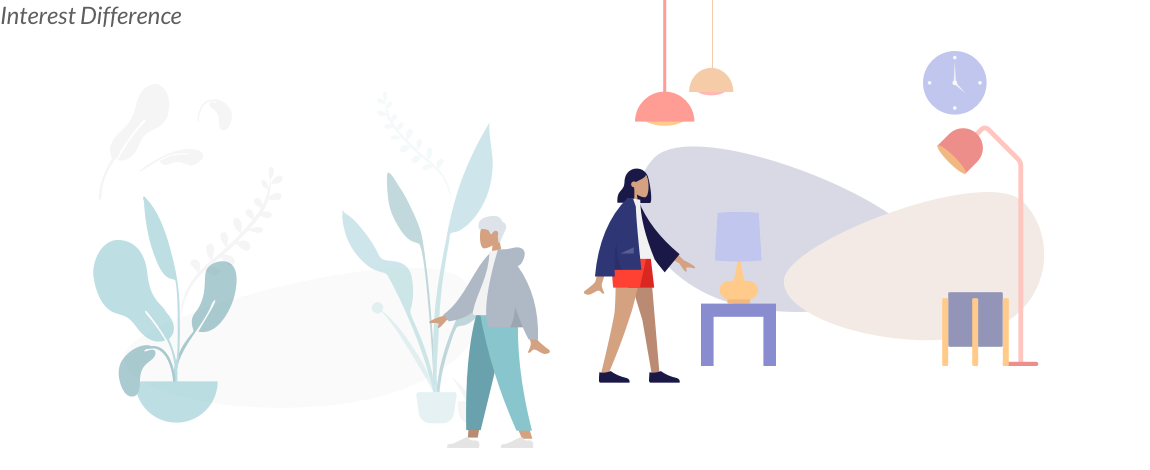
Goal: Assist people with the same spare time and similar interests have activity together!
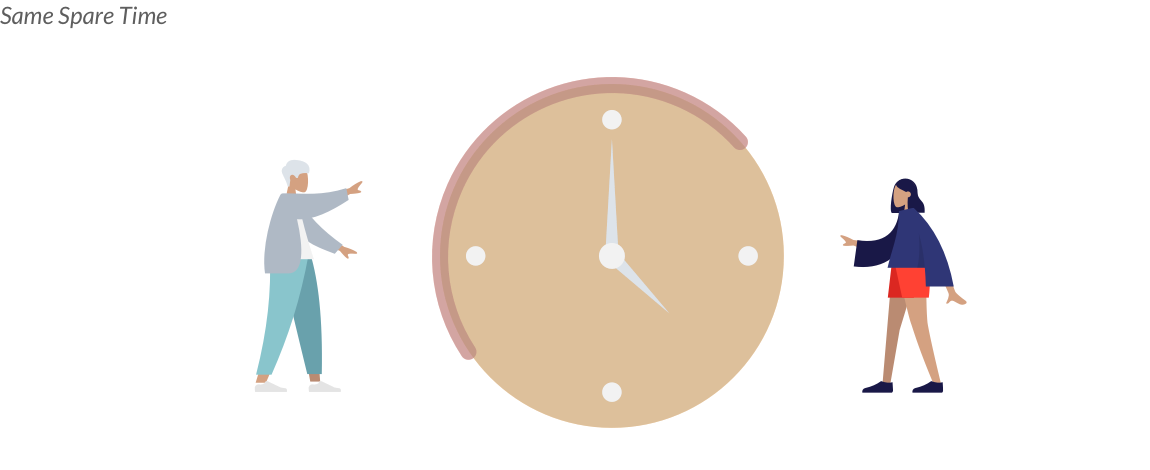

RESEARCH
Survey: Organizers & Participants as two user groups
As aforementioned, from the results of our survey,
24% of the participants claim to often organize activities and 32% of them prefer join activities in spare time.
The result indicates that we have two major user types:
1. Organizers: they have plans in mind and want to gather participants.
2. Participants: they prefer to join activities organized by others to just have fun.
However, the survey didn't indicate if the two groups can be switched. So we clarified it in the interview.
Comparative Analysis: Few apps support activity-search by precise time
Currently, multiple products can facilitate people to find activities or companions according to their time schedules and interests, so maybe our goals have already been achieved. By analyzing some typical related social apps that serve the goal we proposed, "Assist people with the same spare time and similar interest have activity together", let's see where the opportunities lie.
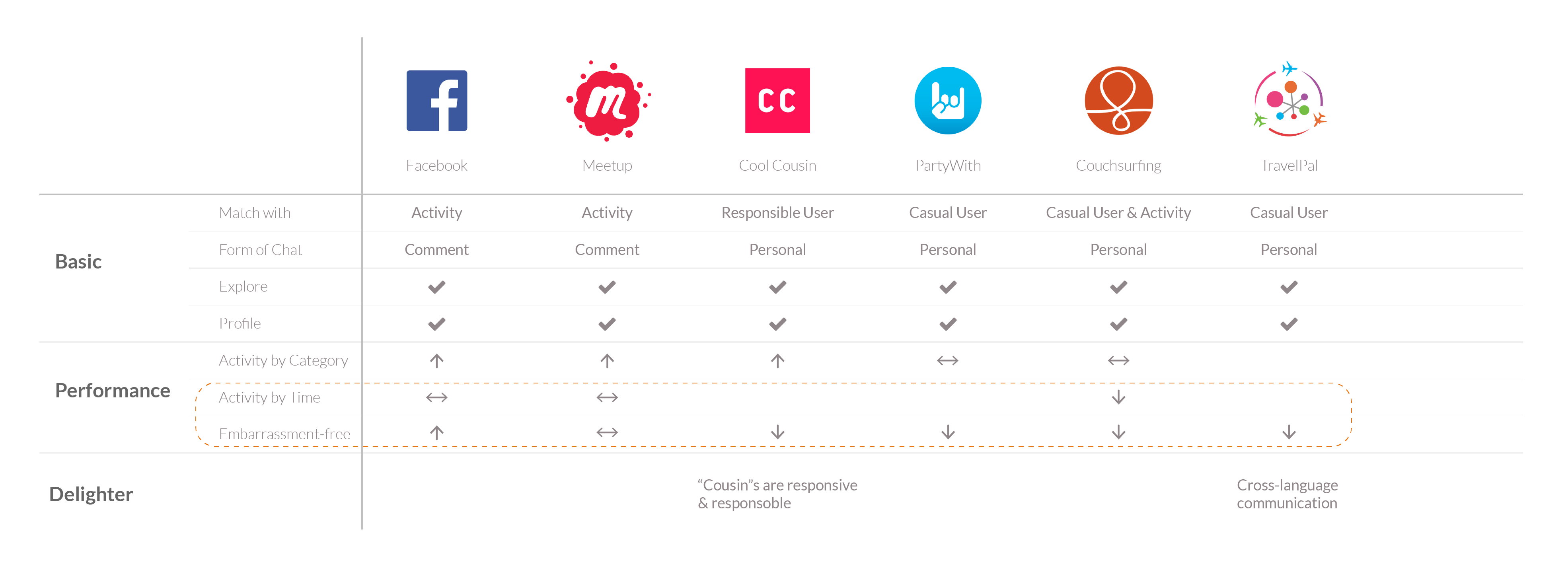
We have found that:
1. There's no direct solution for users who want to have activity during a specific time period.
2. For most of the apps, it can be embarrassing if a user mistakenly join an activity or start a conversation.
3. None of the apps provide ways of emergency help when outdoor.
Interview: Some specific needs
We conducted 4 in-depth interviews with target users in college to know their pain points during the process of looking
for activities or companions that fit their spare time and interests to hang out.
We find some specific needs to address:
-
Organizer and Participant can be interchangeable:
For example, an organizer can be a participant to another activity that fits his/her time and interest. -
Precise search by time:
It's inefficient to scan through all activities of a vague wide range of time for people with exact time in mind. -
Foster trust step by step:
People need to trust each other before hanging out, but it takes time. -
Ensure security :
People can only hang out with a feeling of security.
Summary: Success Criteria & Value Proposition Grid
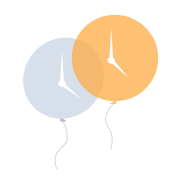
Users can easily find activities or participants with same time and interests.
(Measure by how easy can the users find proper activities or participants)

As long as the users find fulfilling activities, a user can both organize or participate.
(Measure by how likely a user would finally have activities to spend the spare time)
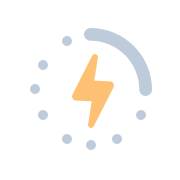
The process of users finding activities or participants should be fast and timely.
(Measure by Time spent in total and during each step)
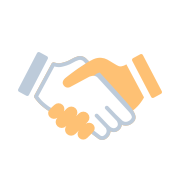
Users feel comfortable to build trust with other users before hanging out.
(Measure by how likely the users would actually hang out after getting in touch)
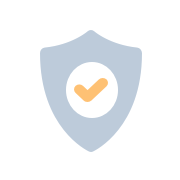
Users have the feeling of security when hanging out.
(Measure by how likely a user would come back to use the app again)
With all the success criteria, we can identify more specifically where our app can stand out among other comparative apps
in terms of the value we provide to the users in the Value Proposition Grid:
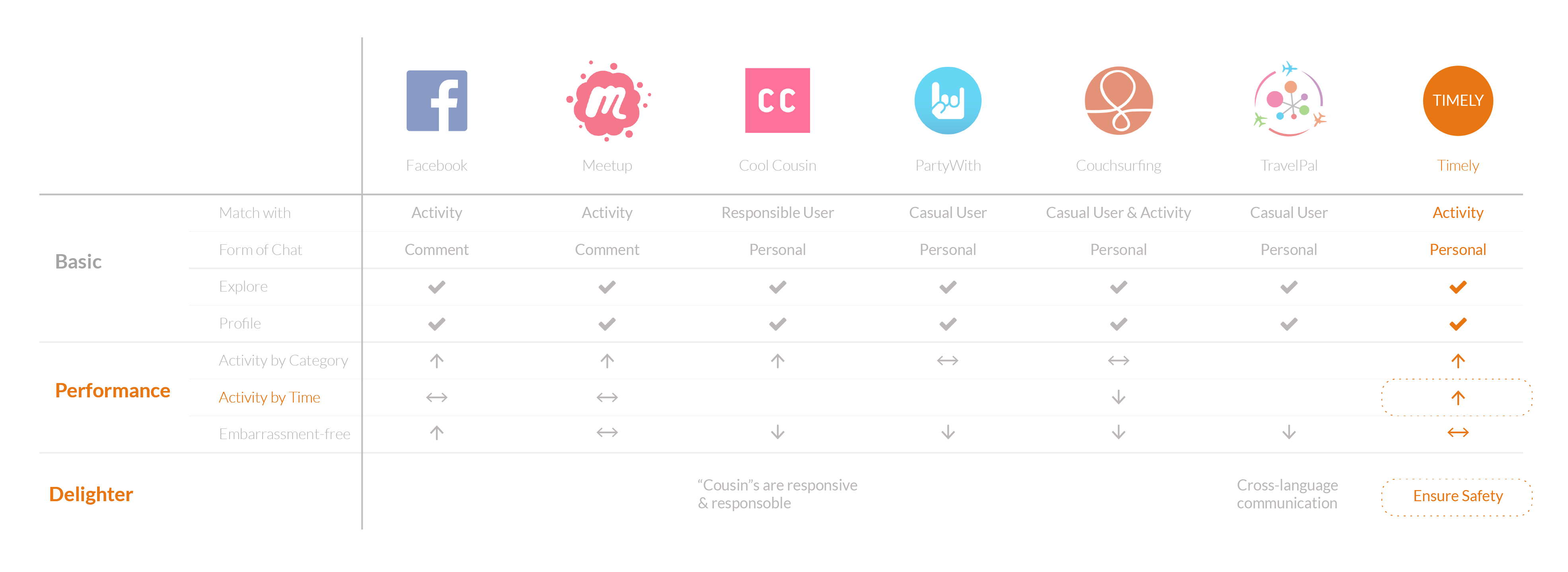
IDEATION
Storyboard as a start point
To start with, I created a storyboard to serve as a base for discussions around functionality and user flow with the team. Along the way, the Success Criteria served as the calibrater for improvement.
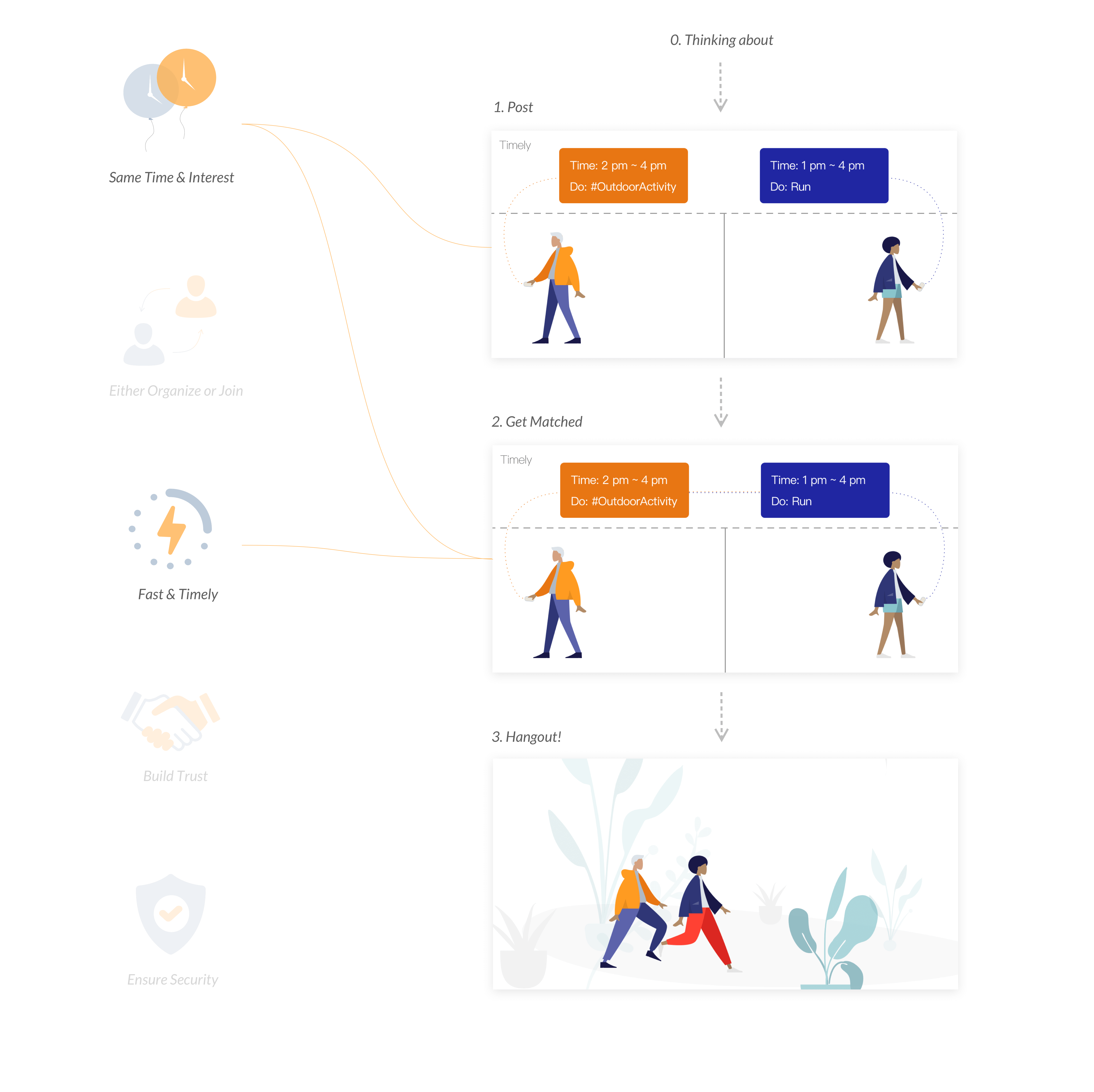
Modified Storyboard addressing Success Criteria
As shown above, only part of the criteria were addressed, so we modified and complemented the story with to define the minimum comprehensive scope that can cover the whole Success Criteria.
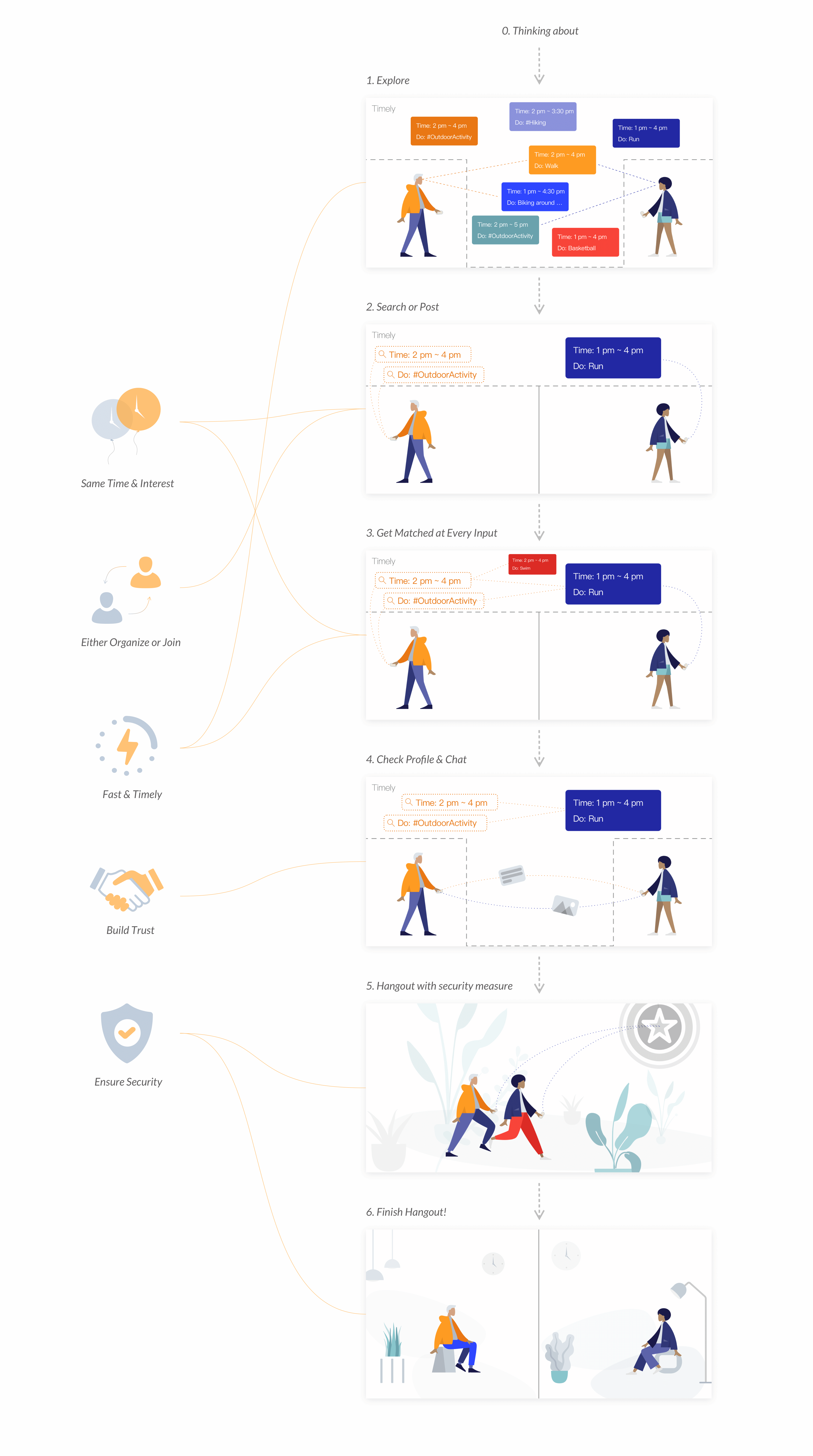
Interpret the Storyboard into a user flow sitemap
The storyboard was further interpreted in the format of a user flow diagram, where the 5 aspects of success criteria were assigned to each major function to achieve.
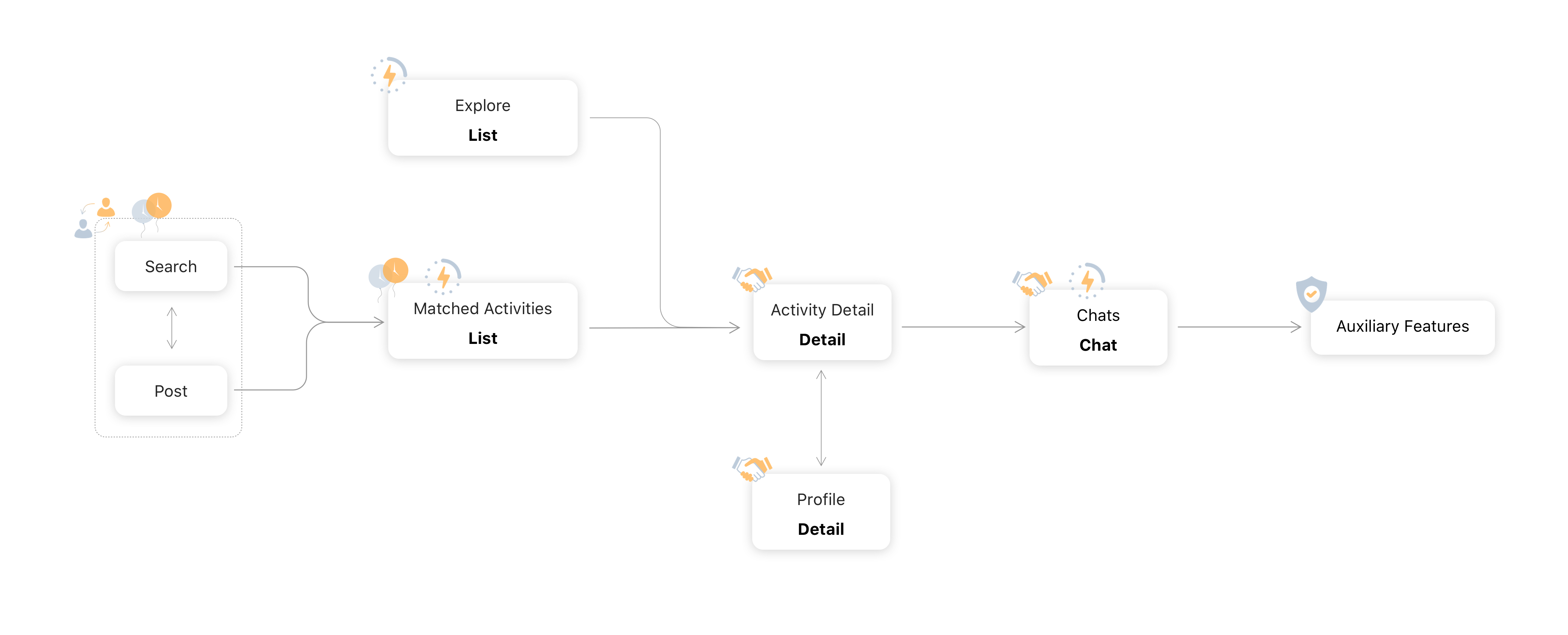
DESIGN DETAILS
Major Challenge 1: How to let users find activities as soon as possible?
Solution 1.1: Explore Page lets users scan posted timely activities and help organizers expose their activities to potential participants
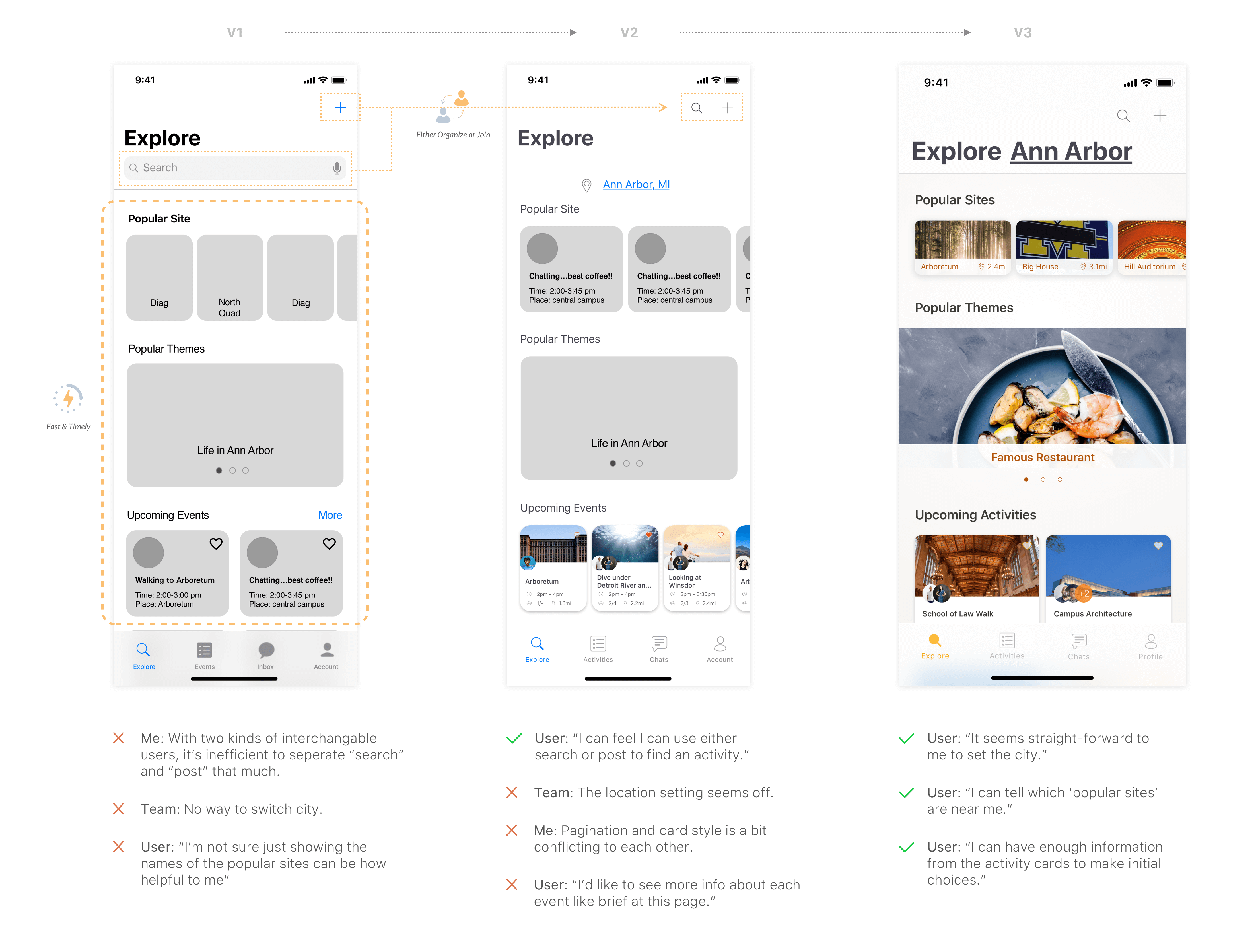
Solution 1.2: The list of matched activities in Search/Post Page refreshes whennever a user sets time or interest, and it's sorted by different criteria automatically
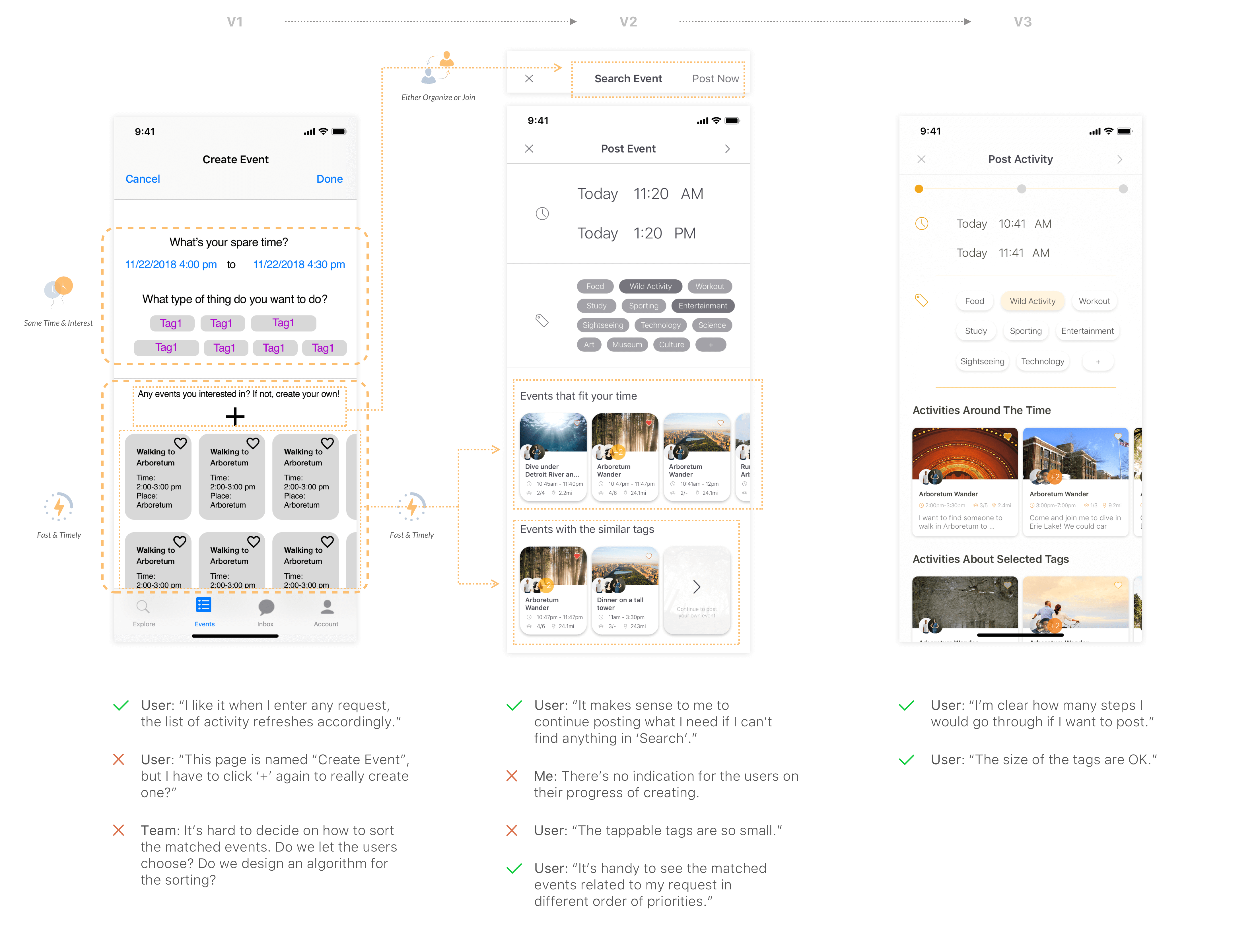
Major Challenge 2: How to help users build trust and how to ensure security?
Solution 2.1: Profile Page provides a safe and reliable starting point for users to know one another
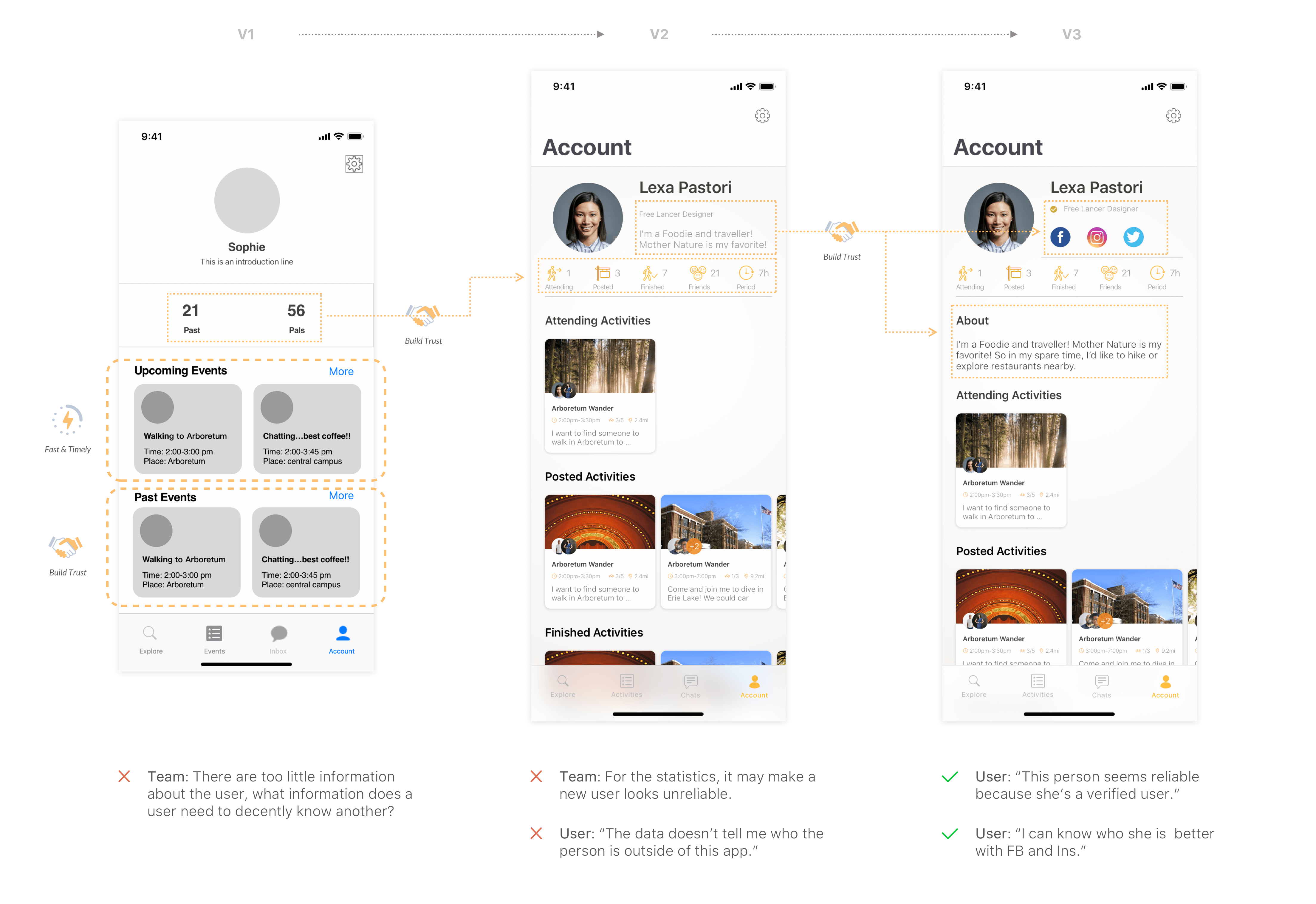
Solution 2.2: Different stages of Chat fit different stages of people-interaction with contextual Auxiliary Features
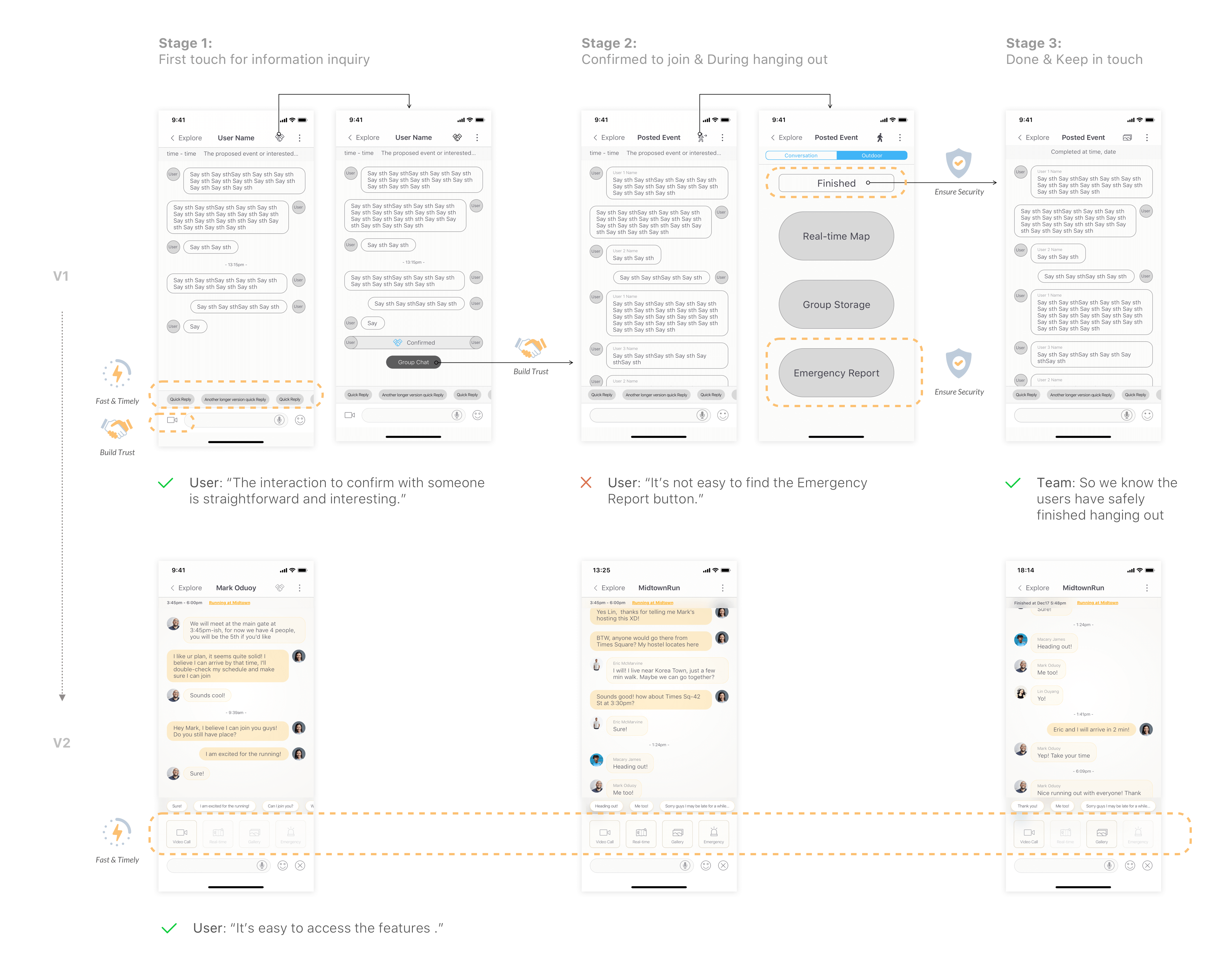
SOLUTION DEMO
An organizer posts an activity to attract participants
A user searches for activities to participate
A user searches for activities to participate
The organizer and participate get in contact and confirm to hang out
REFELECTIONS
Next Steps
-
1. Need further usability test or peer review.
-
2. Dig into logistic functions like "Login/Signup", "More" in "Chat", "Settings", etc.
-
3. Design for multi-platform. For example, team members can check their locations or trigger emergency on wearable devices.
-
4. Scalability can be considered further based on more user research, like expand the scope.
Take-aways
-
1. Details matter. Through this project, many efforts have been invested in the detailed interaction parts. A significant amount of details exist in the flow demonstrated in the story demo, let alone a lot of other parts.
-
2. Negotiate by exploring and making. It is common to have different ideas within a team, either the whole team or just the design team. Therefore, negotiations about design tradeoffs happen frequently in our meetings. While for designers, I find it very important and efficient to explore the ideas by drafting deliverables before putting them on the table for discussion.
-
3. When communicating, try to use the counter part's language and try to trigger their empathy. When communicating with our engineer teammates, I found it important to be able to think and speak the way they do. Thanks to my decent knowledge of database, I could understand and think with them about how to structure ours. Also, being able to help them have empathy to users is fundamental for them to understand WHY a function is needed and in WHICH way.